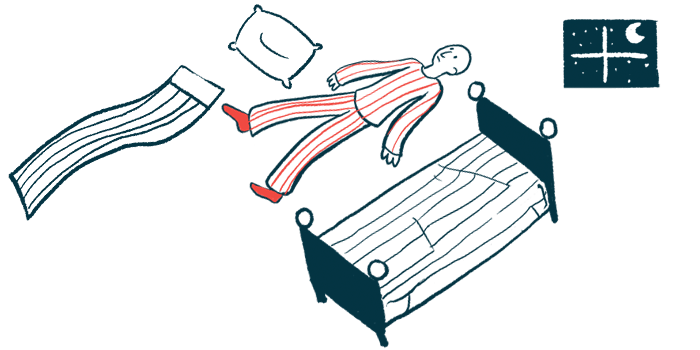Device for home monitoring of sleep with Angelman’s seen as effective
EarlySense uses an under-the-mattress sensor to record sleep patterns, problems

A device to remotely monitor sleep in Angelman syndrome (AS) patients, called EarlySense, was found to be feasible for characterizing their sleep patterns in an at-home setting, according to a recent report.
The no-contact device recognized sleep patterns similar to those recorded with the gold-standard polysomnography (PSG) test, which involves placing multiple sensors on a person’s body and requires an overnight stay at a hospital or clinic.
“These data represent the first step towards validating a scalable sleep monitoring device used in the natural home environment in patients with AS,” the scientists wrote.
The report, “A novel remote monitoring device recapitulates sleep patterns in angelman syndrome,” was published in Sleep Medicine.
Trouble with falling and staying asleep is common with Angelman’s syndrome
Angelman is a complex genetic disease that primarily affects neurological function, leading to intellectual and physical disabilities, behavioral challenges, and seizures, among other disease symptoms.
Sleep problems also are common, with issues such as trouble falling or staying asleep reported in up to 80% of patients, according to the scientists.
Such issues are usually monitored with PSG, where sensors are placed to record brain waves, oxygen levels, heart rate, and breathing during sleep. The test, often called a sleep study, typically is conducted in a hospital or sleep center.
However, many Angelman patients are sensitive to sensory inputs and experience anxiety or stress with changes in their routine, making this type of study difficult to perform.
EarlySense is a contact-free monitoring device that can remotely collect sleep data at the home.
Originally developed by a company also called EarlySense, the technology was acquired in 2021 by Hillrom, which is now a part of Baxter International. A version of it is marketed for monitoring hospitalized patients and those in other inpatient settings.
EarlySense consists of a sensor placed under the mattress, which uses software to convert pressure changes into information about heart rate, breathing, and motion. A previous study, supported by EarlySense, demonstrated that the technology could be effective in monitoring sleep.
Scientists in the U.S. aimed to validate the use of the EarlySense device in monitoring Angelman syndrome patients by determining whether it recorded the same types of sleep patterns previously observed with PSG.
EarlySense device recorded sleep apnea in one of 11 monitored patients
EarlySense was used at the home of 11 Angelman patients over multiple nights. Results overall showed that sleep findings with the remote device were similar to earlier PSG studies, and those using other standard techniques.
Specifically, patients were reported to take a mean of 40.5 minutes to fall asleep after getting into bed, and they would wake up at a mean of 138 minutes (a little over two hours) later. They spent an average of about 5.8 hours asleep, and nearly eight hours in bed, awakening a mean of 2.8 times each hour.
Sleep apnea — when breathing starts and stops suddenly during sleep — was identified using EarlySense in one person, prompting a surgical intervention.
“Given that sleep disturbances in patients with AS likely have an impact on seizure burden, behavior, and parental stress, sleep is an important outcome to effectively measure,” the scientists wrote.
“We feel that this initial data is important to publish to initiate further validation of a remote monitoring sleep device for eventual clinical trial use,” they added.
One of the study’s seven authors is a former employee of EarlySense. This work was supported by the Foundation for Angelman Syndrome Therapeutics.







